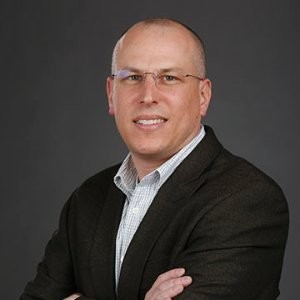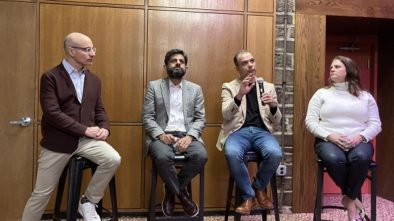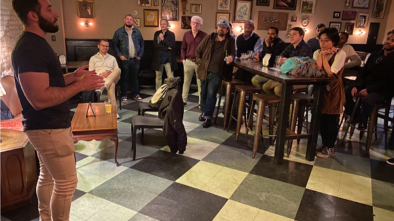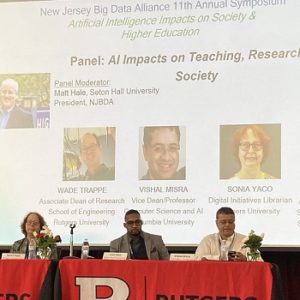Boyarsky Discusses His Tech Innovation Journey at Virtual Princeton Tech Meetup
At a recent Princeton Tech Meetup, Scott Boyarsky, senior vice president of digital experience platforms at Fidelity Investments (Boston), who is a Princeton resident, discussed his digital career journey. The virtual meeting was organized by Chris Boraski, group cofounder, and moderated by James Barrood, former president/CEO of the New Jersey Tech Council and current adviser at Tech Council Ventures (New Brunswick).
Although this was Princeton Tech Meetup’s first online event, Boyarsky noted that virtual events aren’t foreign to him. “While I do live in the Princeton area, my teams are spread throughout the globe, including a team that’s based in China,” he said.
How Fintech is Handling COVID-19
Barrood addressed the elephant in the room, which is the fact that some financial companies, such as Robinhood (Menlo Park, Calif.), have been severely challenged by unprecedented customer demand since the economic fallout from COVID-19 began.
Boyarsky replied that “many of our larger incumbents have had major challenges with their systems with traffic,” but not Fidelity. “The load on our consumer digital interfaces is unprecedented. The premarket orders that are queued up in our systems every morning are unlike anything we’ve ever seen before. Our APIs, our services were never designed for the scale at which all of us in this industry are operating at right now. However, my teams have been flawlessly executing and adjusting our systems, our platforms, our services in real time to make sure we can meet customer demand. It’s been absolutely phenomenal.”
Starting the Digital Journey
Discussing his journey, Boyarsky recalled that, as a high school student, he would sneak into the Princeton University computer labs, which weren’t protected at the time, and just play around with the internet. This was before the appearance of the first graphical web browsers on the internet. “We were just doing what kids do, starting to explore and soak everything in.”
After college, he noted, there was a high demand for “webmasters,” who were jacks of all trades. They could do everything from graphics with photoshop to spinning together relational databases, he said. “There was no rule book. There was no playbook.” Everything was being done for the first time.
One of his first pivotal jobs was for a large publisher. He was brought in during “the early days to help them spin up their web presence, their digital presence, and help them figure out the early days of online learning and online curriculums.” This included doing some early videos for the internet.
Boyarsky later landed at Disney, where his approach to digital coalesced. He took on the role of product manager, which involved a little bit of tech, design and customer focus, as well as overall control of the project. The product manager is, as he likes to tell his teams, “the voice of the customer, and the customer advocate.” While at Disney, he began to innovate.
Innovating at Disney
“I helped build the team that launched the very first ABC [broadcast network] full episode player. This was before Netflix started streaming. Netflix was still shipping DVDs. This is before YouTube was owned by Google. This was cutting edge in 2006 and 2007. We helped develop some really interesting technologies, like adaptive bitrate video delivery prior to 2007.”
Boyarsky’s next job was at Turner Sports. “Some of the work that I did between 2010 and 2012 included working on the NCAA March Madness tournament. For those of you who may have consumed any of those games on video via iOS or Android or perhaps over the web, my teams built those experiences,” he told the audience.
“The biggest complexity to March Madness is that in about a 14-day stretch, you’re streaming more live programming than anywhere else, at least at the time. They were full live-streaming 24 hours. In 2010, the idea of millions of concurrent simultaneous, high-def streams being consumed was very novel.”
Some Cool Industry Firsts at CNBC
Turner is in Atlanta, and Boyarsky wanted to come back to the Northeast. He wound up at CNBC as head of product and then as CTO. At CNBC, “every day felt like we were doing the Super Bowl! Any of you that watch CNBC can appreciate the technology. The digital technology team that I ran also powered all the on-air graphics. What’s amazing about CNBC, for all of you that that might not appreciate it, is all of those graphics that generate rapidly on CNBC. If any of you have worked with Cairo systems or other graphic TV, graphical systems, most of those are static. You know, someone types it in, it burns the image, and it goes out, out on air. With CNBC, all those charts, all of those graphs, all those data points are being generated in real time. We did some really cool industry firsts while I was there. We built the first on-air graphics engine that used the Unreal Engine.” Unreal Engine is a 3D graphics platform for gaming creation.
Later, Boyarsky teamed up with Comcast to build its set-top box interface for voice remote control. “The scale is what attracted me to take that role on and that challenge. It operated with 60 million customers across the United States. It crosses two thirds of American households.” Then Boyarsky pivoted to build out Comcast’s smart home technology.
His most recent pivot involved taking on financial technology at Fidelity. He said that he was inspired by Abby Johnson, the chair and CEO of Fidelity, who told Barron’s magazine that her mission and Fidelity’s mission is not to make people rich. Instead, they are looking to provide financial independence to each and every American.
Boyarsky noted that he has had a fortunate career journey in tech innovation and information technology. In response to a questioner, he noted that one thing that has remained with him throughout his journey is curiosity. “I’ve always managed to stay curious.”




